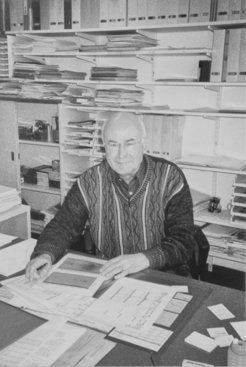In memory of Dr. Jürgen Röttger
Dr. Jürgen Röttger, former staff member at the Max Planck Institute for Aeronomy (today: Max Planck Institute for Solar System Research), pioneer of the atmospheric research facility SOUSY (SOUnding SYstem for atmospheric structure and dynamics), and long-time director of the international research association EISCAT (European Incoherent Scatter Scientific Association), passed away on 31 May 2020.

Already in his diploma thesis, which he wrote at the Institute for Geophysics and Meteorology at the TU Braunschweig, Jürgen Röttger studied the propagation of short waves in Earth’s ionosphere. During his doctorate at the University of Göttingen he deepened his knowledge in this field of research. As a University student, Jürgen Röttger began to work at the Max Planck Institute for Aeronomy (MPAE) in Katlenburg-Lindau, where he took up his first scientific position after successfully completing his doctorate. Until 1982 he conducted ionospheric research at MPAE and was one of the founding members of the working group SOUSY. The group developed measuring systems which determined properties of the lower and middle atmosphere by means of backscattered radar signals. Jürgen Röttger played a decisive role in all phases of the project: from the designing of the measuring system, through initial test measurements on the institute's premises in Katlenburg-Lindau and the construction of a stationary facility near Bad Lauterberg in the Harz Mountains, to the sometimes adventurous measuring campaigns of a second, mobile facility for example in Puerto Rico. With the participation of Jürgen Röttger, the working group gained worldwide recognition and contributed significantly to the fact that the MPAE became one of the leading research institutions in the field of ionospheric research.
In 1982 Jürgen Röttger left MPAE for a time. After research stays in Sweden and Puerto Rico he was appointed director of the international research association EISCAT in 1986. EISCAT operates radar facilities for ionospheric research in Sweden, Norway, and Finland. MPAE was the German representative in the EISCAT committees for many years and provided the German research contribution to this project. During his term of office, Jürgen Röttger set the course for the future of the research association, for example by planning, building and commissioning the research facility in Longyearbyen on Spitsbergen and by extending the "EISCAT family", which until then had been dominated by European research institutions, to include Japanese research institutions.
In 1998 Jürgen Röttger returned to the MPAE and remained associated with the institute even during his retirement as a farsighted and competent consultant. In the course of his scientific career Jürgen Röttger published numerous scientific articles on ionospheric research, some of which are still considered standard works in this field.
With Jürgen Röttger, the Max Planck Institute for Solar System Research and the scientific community have lost a visionary pioneer, a passionate researcher, and a good friend.
